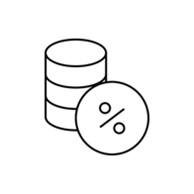S&P Global Offerings
Featured Topics
Featured Products
Events
S&P Global Offerings
Featured Topics
Featured Products
Events
S&P Global Offerings
Featured Topics
Featured Products
Events
Banking & Capital Markets
Economy & Finance
Energy Transition & Sustainability
Technology & Innovation
Podcasts & Newsletters
Banking & Capital Markets
Economy & Finance
Energy Transition & Sustainability
Technology & Innovation
Podcasts & Newsletters
S&P Global Offerings
Featured Topics
Featured Products
Events
Case Study — 6 Apr, 2023
Highlights
THE CLIENT: A large commercial bank
USERS: Credit and risk management teams
The way of doing business has changed substantially as geopolitical conflicts, high levels of inflation and supply chain disruptions force companies to address new levels of risk and competition. Implementing digital strategies has never been more important as the pace of technological disruption supercharged by the pandemic takes hold across organizations. Credit and risk management teams are no exception. From dynamic financial spreading tools to cloud-based storage, a host of capabilities are being actively deployed to help streamline and automate risk assessment processes to improve efficiencies and stay ahead of the curve.
This large commercial bank took important steps to enhance its digital transformation by creating a centralized data management system that could house both internal and external information for ready access by different departments. The main aim was to enhance the bank's client relationship management (CRM) system and help streamline the credit assessment process. The head of the digital group collaborated with the credit and risk management teams to better understand the type of data that was needed to support assessments of creditworthiness and meet regulatory requirements. Importantly, the teams wanted to make sure that it would be easy to link disparate datasets to create a holistic picture of potential exposures.

Members of the credit and risk management teams wanted to take full advantage of the centralized data warehouse by populating it with an extensive amount of external information to support their analysis. Their wish list included:
The bank was very familiar with S&P Global Market Intelligence ("Market Intelligence") and the teams reached out to learn more.
Specialists from Market Intelligence described a host of data services, plus a comprehensive linking/mapping solution that enhances internal systems through the collection, standardization and aggregation of reported data. Together, these capabilities would provide the teams with the ability to:
|
|
Leverage unique financial data |
Premium Financials provides standardized data for 5,000+ financial, supplemental and industry-specific data items for 150,000+ companies globally, including 95,000+ active and inactive companies across multiple industries. Data is available at numerous frequencies and points-in-time.[1] |
|
|
Gain insights into company activities |
Company Intelligence provides profiles of public and private firms worldwide, including company contact information, competitors, financial auditors and summary or detailed-level business descriptions. |
|
|
Connect the dots across datasets |
Business Entity Cross Reference Services enables users to tap into extensive linking capabilities for securities, issuers and entities. This ties together the standardized and proprietary IDs for over nine million entities to the primary key, the S&P Capital IQ Company ID. It includes mapping across 18 business entity IDs (such as Legal Entity Identifiers (LEIs), S&P Ratings and CUSIP6), eight industry sectors and seven instrument identifiers. |
The credit and risk management teams also decided to enhance their customer profiles by adding S&P Global Trucost Environmental Data. This data measures environmental impact across key dimensions (e.g., greenhouse gas emissions, air pollutants and waste disposal) for over 16,800 companies. It can be used to assess environmental costs, identify and manage environmental and climate risks and conduct peer and portfolio analysis from a climate and environmental perspective. This expansion required mapping data to the GICS industry code that provides historical company-level global industry classifications for aggregate level reporting internally and externally.
Market Intelligence's extensive datasets would enable members of the credit and risk management teams to create comprehensive customer and prospect profiles to embellish their analysis. In addition, the use of a cross-reference solution was seen as essential for successful digitization projects to efficiently "glue" public and private data together across datasets. The teams subscribed to all the capabilities discussed and are now benefiting from being able to:
Click here for more information on Cross Reference Services.
[1] Coverage numbers as of December 2022.


